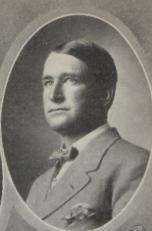North Dakota's 3rd congressional district
North Dakota's 3rd congressional district is an obsolete congressional district in the state of North Dakota that was created by reapportionments in 1913, and eliminated by the reapportionments of the 1930 census in 1933. The district consisted of the western part of the state, and was made up of following counties: Divide, Burke, Renville, Ward, Mountrail, Williams, McKenzie, McLean, Dunn, Mercer, Oliver, Billings, Stark, Morton, Hettinger, Bowman and Adams.
The seat only was only filled by two congressmen during its existence; Patrick Daniel Norton and James H. Sinclair.
List of members representing the district
| Member | Party | Years | Cong ress |
Electoral history |
|---|---|---|---|---|
| District created | March 4, 1913 | |||
 Patrick Daniel Norton |
Republican | March 4, 1913 – March 3, 1919 |
63rd 64th 65th |
Elected in 1912. Re-elected in 1914. Re-elected in 1916. Retired. |
 James H. Sinclair |
Republican | March 4, 1919 – March 3, 1933 |
66th 67th 68th 69th 70th 71st 72nd |
Elected in 1918. Re-elected in 1920. Re-elected in 1922. Re-elected in 1924. Re-elected in 1926. Re-elected in 1928. Re-elected in 1930. Redistricted to the at-large congressional district. |
| District eliminated | March 4, 1933 | |||
Election results
| Year | Candidate | Party | Votes | % |
|---|---|---|---|---|
| 1912 (63rd Congress) | Patrick Daniel Norton | R | 12,935 | 50.7 |
| Hal Halvorsen | D | 7,306 | 28.7 | |
| Arthur LeSeuer | SOC | 5,254 | 20.6 | |
| 1914 (64th Congress) | Patrick Daniel Norton | R | 15,547 | 57.1 |
| Halvor Halvorsen | D | 7,394 | 27.2 | |
| S. Griffith | SOC | 3,791 | 13.9 | |
| 1916 (65th Congress) | Patrick Daniel Norton | R | 20,393 | 65.2 |
| Charles Simon | D | 8,293 | 26.5 | |
| Anton Klemmens | SOC | 2,586 | 8.3 | |
| 1918 (66th Congress) | James H. Sinclair | R | 17,564 | 66.2 |
| Halvor Halvorson | D | 8,951 | 33.8 | |
| 1920 (67th Congress) | James H. Sinclair | R | 41,409 | 62.9 |
| R.H. Johnson | D & I | 24,460 | 37.1 | |
| 1922 (68th Congress) | James H. Sinclair | R | 33,499 | 64.2 |
| E.J. Hughes | IR | 18,672 | 35.8 | |
| 1924 (69th Congress) | James H. Sinclair | R | 37,925 | 73.4 |
| R.A. Johnson | D | 13,730 | 26.6 | |
| 1926 (70th Congress) | James H. Sinclair | R | 42,923 | 87.8 |
| Reuben H. Leavitt | D | 5,960 | 12.2 | |
| 1928 (71st Congress) | James H. Sinclair | R | 52,220 | 84.8 |
| Reuben H. Leavitt | D | 9,335 | 15.2 | |
| 1930 (72nd Congress) | James H. Sinclair | R | 50,917 | 77.8 |
| Reuben H. Leavitt | D | 12,296 | 18.8 |
gollark: Ah, I see.
gollark: I can never remember which way round the percentiles go.
gollark: In poorer countries, people have more children so they can get more support when they are old and as a contingency in case few survive to adulthood.
gollark: There's probably more than that.
gollark: Generally higher living standards result in lower birth rates.
References
- Martis, Kenneth C. (1989). The Historical Atlas of Political Parties in the United States Congress. New York: Macmillan Publishing Company.
- Martis, Kenneth C. (1982). The Historical Atlas of United States Congressional Districts. New York: Macmillan Publishing Company.
- Congressional Biographical Directory of the United States 1774–present
- Congressional Quarterly's Guide to U.S. Elections, Fourth Edition (CQ Press, 2001)
This article is issued from Wikipedia. The text is licensed under Creative Commons - Attribution - Sharealike. Additional terms may apply for the media files.